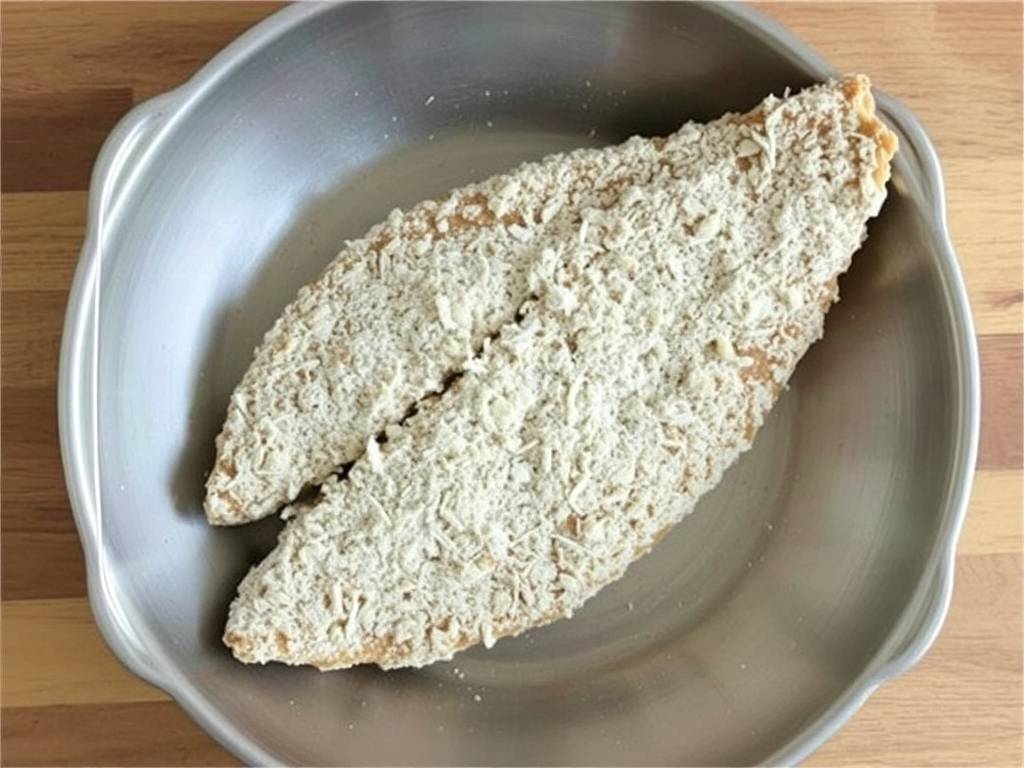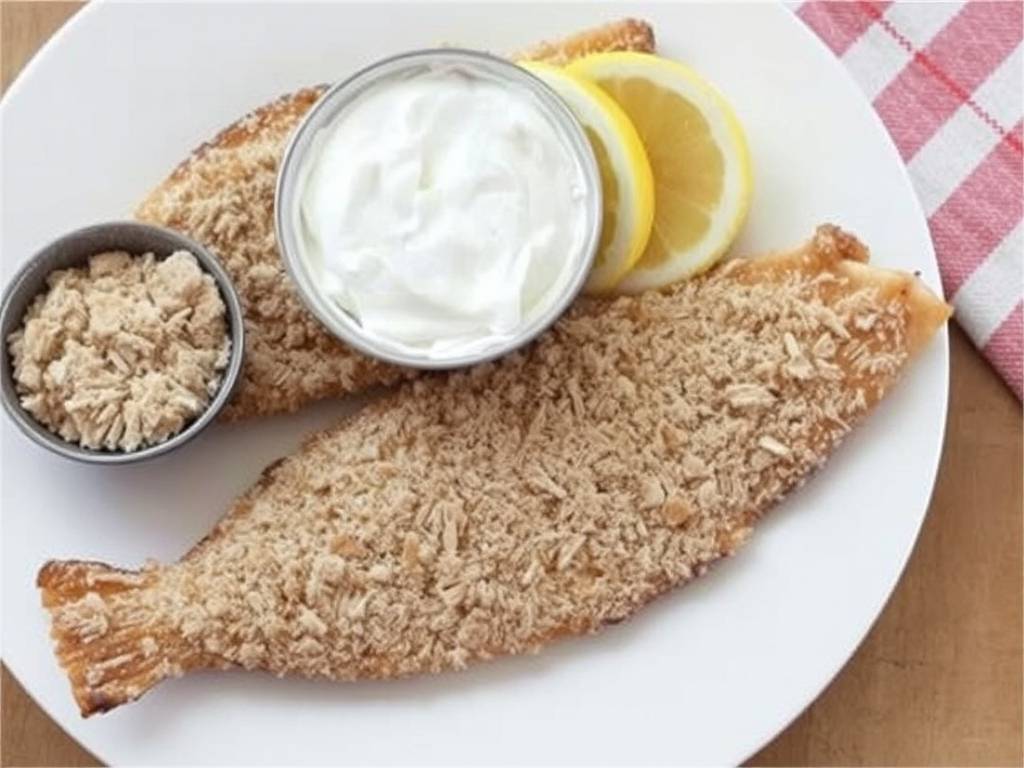Crispy Perfection: The Ultimate Guide to Making Fried Fish with a Golden Flour Crust
There's something universally comforting about a piece of perfectly fried fish. That satisfying crunch as you break through the golden-brown crust, revealing tender, flaky, and steaming hot fish inside, is a culinary experience that's hard to beat. While it might seem like a dish best left to restaurants, achieving this crispy fried fish at home is surprisingly straightforward. This comprehensive guide will walk you through every step, from selecting the right fillet to mastering the sizzle, ensuring you can create a homemade flour crusted fish that rivals your favorite seafood spot.
Many home cooks are intimidated by the process, fearing greasy, soggy, or bland results. But fear not! We will tackle all these potential pitfalls head-on. This guide is designed to be your one-stop resource, answering every question you might have about creating the perfect golden brown fish fillet. We'll cover the science of the crust, the best oils for frying, and even how to keep your fish warm and crispy for serving. So, let's dive into the art of creating a simple flour batter for fish that delivers incredible texture and flavor.

The Foundation: Choosing Your Fish and Ingredients
The journey to a fantastic flour-crusted fried fish begins long before the oil heats up. Your choice of fish is paramount.
Selecting the Perfect Fish Fillet: For frying, you want a firm, white-fleshed fish with a mild flavor that won't fall apart during cooking. Excellent choices include:

- Cod: A classic for fish and chips, known for its large, firm flakes.
- Haddock: Slightly sweeter and firmer than cod, another popular choice.
- Tilapia: A readily available, affordable, and mild option that works beautifully.
- Catfish: A Southern favorite with a distinct, robust flavor that stands up well to frying.
- Halibut: A premium option with exceptionally firm and flaky flesh.
Regardless of your choice, ensure the fillets are fresh, smell clean like the ocean, and are of even thickness for consistent cooking. Pat them completely dry with paper towels—this is a non-negotiable step for a crispy crust instead of a steamy one.
The Flour Coating Components: The magic of the crust lies in its simplicity. You don't need a complicated easy fish frying recipe to get great results. For the basic flour dredge for seafood, you will need:
- All-Purpose Flour: The base of our crust. About 1 cup is a good starting point.
- Seasonings: This is where you personalize your dish. A must-have is salt and black pepper. From there, consider garlic powder, onion powder, paprika (for color and a slight smokiness), cayenne pepper for heat, or dried herbs like dill or thyme.
- The Wet Dip (The Glue): To make the flour stick, you need a binding agent. Beaten eggs or buttermilk are the top contenders. Buttermilk adds a lovely tang and tenderness, while eggs create a slightly more robust coating.
The Secret to an Extra-Crunchy Crust: Here’s a pro tip for achieving that shatteringly crisp exterior that defines the best southern style pan fried fish. It's called the double-dredge technique. After your initial dip in the flour, then the wet ingredient, you dip the fish back into the flour for a second time. This double layer creates tiny, craggy bits that fry up into an incredibly textured and crunchy crust.
The Frying Process: From Dredge to Golden Perfection
Now for the main event. This section will guide you through the frying process, ensuring you master the technique for frying fish without grease.
Step 1: Prepare Your Dredging Stations Set up three shallow dishes in an assembly line:
- Dish 1: Your all-purpose flour, mixed generously with your chosen seasonings.
- Dish 2: Your wet ingredient—either two beaten eggs (perhaps with a tablespoon of water or milk) or one cup of buttermilk.
- Dish 3: Another portion of your seasoned flour for the second dredge.
Step 2: The Dredging Dance Take your dry fish fillet and coat it thoroughly in the first dish of seasoned flour. Shake off any excess. Next, dip it into the wet mixture, allowing any extra to drip off. Finally, place it back into the seasoned flour (dish 3) and press gently to ensure a good, even coating. This final press is what creates those delightful craggy bits. Place the coated fillet on a wire rack while you finish the others. This allows the coating to "set," which helps it adhere during frying.
Step 3: Choosing and Heating the Oil The right oil and the right temperature are the most critical factors in preventing greasy fish. Use an oil with a high smoke point, such as canola oil, vegetable oil, or peanut oil. Fill a heavy-bottomed skillet, cast-iron pan, or Dutch oven with about 1/2 to 1 inch of oil. You don't need to deep-fry; pan-frying is perfectly effective.
Heat the oil over medium-high heat until it reaches 350-375°F (175-190°C). If you don't have a thermometer, test the oil by dropping a small cube of bread into it. If it sizzles vigorously and turns golden brown in about 60 seconds, the oil is ready. Maintaining this temperature is key. If the oil is too cool, the fish will absorb oil and become soggy. If it's too hot, the crust will burn before the inside is cooked.
Step 4: The Sizzle and Fry Gently lay the fillets away from you into the hot oil to avoid splatters. Do not overcrowd the pan, as this will cause the temperature to drop dramatically. Fry for 3-5 minutes per side, depending on thickness, until the crust is a deep, golden brown color. The fish should be opaque and flake easily with a fork. Avoid moving the fish constantly; let it fry undisturbed to form a solid crust before you flip it.
Step 5: Draining is Crucial Once cooked, remove the fillets with a slotted spatula or tongs and place them on a wire rack set over a baking sheet. Do not place them directly on paper towels. While paper towels soak up grease, they also trap steam, which can make the bottom of your beautifully crispy crust soft and soggy. The wire rack allows air to circulate, keeping the entire piece crispy. For an extra touch, you can keep them warm in a 200°F (95°C) oven while you finish frying the batch.
Serving and Troubleshooting Your Masterpiece
Your crispy fried fish is now ready! Serve it immediately with lemon wedges, tartar sauce, malt vinegar, or a creamy remoulade. It's fantastic with classic sides like french fries, coleslaw, or hushpuppies.
Let's quickly address common issues to ensure your success every time:
- Problem: Soggy Crust.
- Solution: The fish wasn't dry before dredging, the oil temperature was too low, or the pan was overcrowded. Always pat fish dry, monitor your oil temp, and fry in batches.
- Problem: Bland Flavor.
- Solution: Don't be shy with the seasonings in your flour! Taste your seasoned flour; it should be pleasantly salty and flavorful on its own.
- Problem: Coating Falls Off.
- Solution: Ensure you are shaking off excess flour after the first dredge and letting the coated fish rest on a rack for a few minutes before frying. This helps the coating set.
- Problem: Burnt Outside, Raw Inside.
- Solution: Your oil is too hot. Reduce the heat and use a thermometer to maintain the correct temperature. Also, consider cutting thicker fillets in half horizontally (butterflying) to create more even, thinner pieces.
Making homemade flour crusted fish is a rewarding skill that brings a taste of the coast right to your kitchen. With this guide, you have all the knowledge you need—from the best oil for crispy fried fish to the secret to a crunchy fish coating—to create a dish that is sure to impress. It’s a simple, time-honored technique that yields delicious results. So, heat that oil, and get ready for the satisfying crunch of your own perfectly fried fish.






发表评论